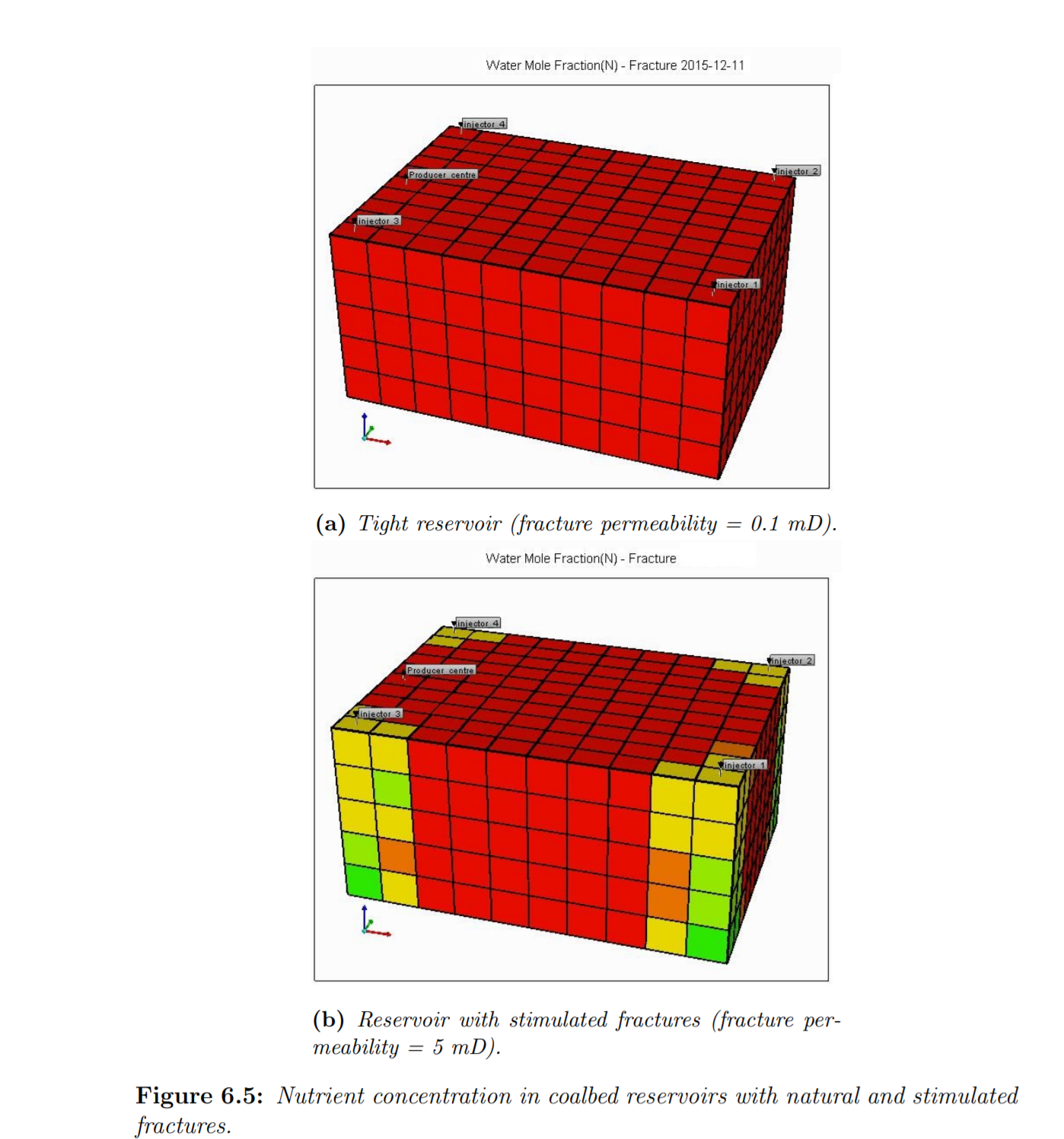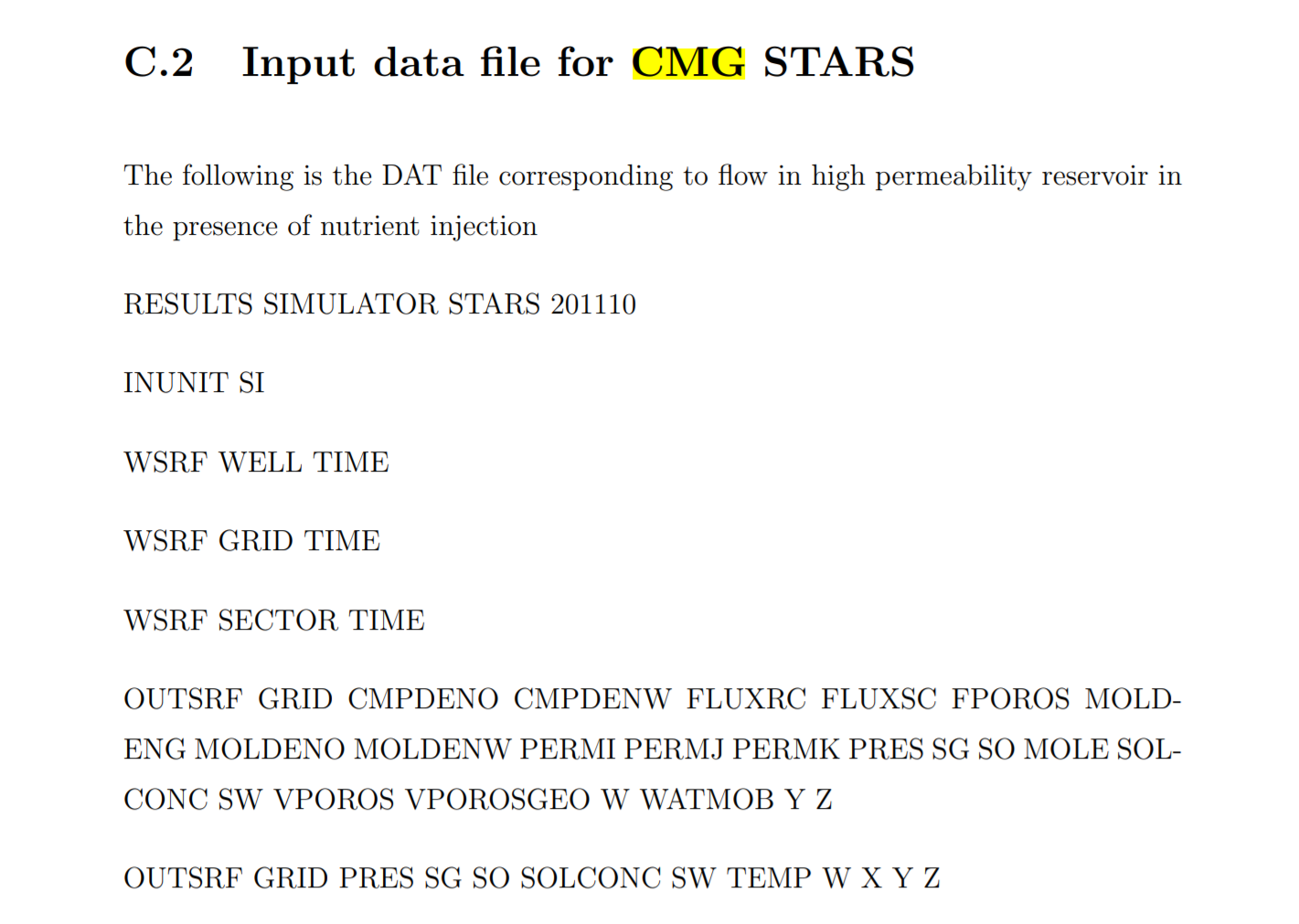Development of multiscale microbial kinetic-transport models for prediction and optimization of biogenic coalbed methane production
本研究目标是开发一种用于煤碳生物转化过程的酶反应动力学模型,能够与多尺度运移模型相结合,模拟和优化现场尺度的生物煤层气生产。生物煤层气(CBM)是一种由厌氧微生物分解煤层产生的非常规天然气,又称生物甲烷。煤转化为天然气有诸多优点,已在实验室尺度对这一强化过程进行了大量研究,并进行了一些现场试验。任何此类技术的商业化应用都需要概念和现场尺度的优化研究。煤炭性质复杂且可变,相关的传质和所涉及的微生物过程,都具有挑战性。在本研究使用了一种尺度放大方法,从最小尺度的反应动力学发展开始,并在每个连续尺度上添加适当的传质效应,建立煤层气储层模拟模型。
第一个挑战是开发具有合理预测能力的微生物动力学模型。为此,对煤生物转化中涉及的微生物反应网络进行了广泛研究,并对实验室实验数据进行了分析和解释,以提出简化的反应路径。然后,使用集总物种推导了基于简化和修正Monod酶的反应动力学模型,这是复杂反应混合物动力学描述中常见的方法,如在1流体催化裂化中发现的。然后通过对各种煤炭富集培养物的数据进行非线性回归来验证该模型。
接下来将动力学模型应用于岩心驱油实验,该实验是现场条件的实验室规模表示,包括气体扩散和吸附特征。使用计算奇异摄动分析简化模型,并设计基于模型的优化实验设计。推导了一组偏微分方程,模拟以双重孔隙度为特征的煤层中发生的多种气体传质/储存过程。在使用前向差分公式和无量纲化进行离散后,使用Levenberg-Marquardt算法求解刚性传输模型。根据阿尔伯塔省Manville井的天然气产量数据,对传质模型进行历史拟合。最后,将气体传质和反应动力学耦合并模拟生物煤层气流动,然后在CMG STARS中进行多相、多组分储层模拟,以估算和优化生物煤层甲烷的商业产量。多项式混沌展开(PCE)用于量化模型中参数不确定性对甲烷产量估计的影响。
阿尔伯达大学化学与材料工程系
The fundamental objective of this research project is to develop an enzymatic reaction kinetic model for coal bioconversion which, on integration with multiscale transport models, would allow simulation and optimization of field scale biogenic coalbed methane production.
Biogenic coalbed methane (CBM) is an unconventional source of natural gas produced by microbial anaerobic breakdown of coal. Given the many advantages of converting coal to natural gas, much research has been conducted on the enhancement of this natural process at the laboratory scale, and some field scale tests have also been conducted. Commercialization of any such technology requires conceptualization and optimization of field scale strategies. This is a challenge given the complexity and variability of coal, the associated transport processes and the microbial processes involved. In this study, we have used a scaling-up approach starting with the development of reaction kinetics at the smallest scale and the addition of appropriate transport effects at each successive scale to build a model for simulation of CBM in coalbed reservoirs.
The first challenge is to develop a suitable microbial kinetic model with reasonable predictive capability. To this end, microbial reaction networks involved in coal bioconversion were extensively reviewed and complemented with analysis and interpretation of data from laboratory experiments to propose a simplified reaction pathway. An enzymatic reaction kinetic model based on simple and modified Monod models was then derived using lumped species, an approach common in kinetic descriptions of complexreaction mixtures such as those found in fluid catalytic cracking. The model was then validated by nonlinear regression of data from various coal enrichment cultures.
The kinetic model was next applied to a coreflooding experiment, which is a laboratory scale representation of field conditions, with the inclusion of gas diffusion and sorption behaviour. The model was simplified using computational singular perturbation analysis and an optimal model-based experimental design was devised.
Next, a set of partial differential equations were derived to model the multiple gas transport/storage processes occurring in a coalbed reservoir characterized by dual porosity. After discretization using forward difference formulas and non-dimensionalization, the stiff transport model was solved using the Levenberg-Marquardt algorithm. Dimensionless numbers derived in the course also allow analysis of dominant processes at changing scales. History matching of the transport model was performed against gas production data from Manville wells in Alberta. Finally, gas transport and reaction kinetics were coupled for simulation of biogenic coalbed methane flow and then advanced to multiphase, multicomponent reservoir simulations in CMG STARS for estimation and optimization of commercial biogenic coalbed methane production. Polynomial chaos expansion (PCE) was used to quantify the effect of parametric uncertainty in the model on estimates of methane production.


